I 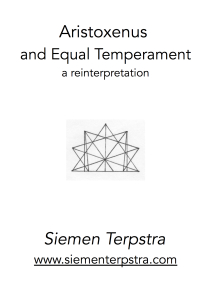 was repeatedly told that one cannot set a tempered harmony on a monochord by classical means. However, I realised that one exception exists, the complex of multiple divisions 12-et, 24-et, 36-et, 72-et, and 144-et. These very systems are the ones clearly described by Aristoxenus. This realisation prompted the following study of Aristoxenus.
was repeatedly told that one cannot set a tempered harmony on a monochord by classical means. However, I realised that one exception exists, the complex of multiple divisions 12-et, 24-et, 36-et, 72-et, and 144-et. These very systems are the ones clearly described by Aristoxenus. This realisation prompted the following study of Aristoxenus.
I wrote this paper very long ago. I still stand by most of it, but a couple of my conjectures have shifted over the years. In the paper I presumed that Pythagoreans did much of the research into irrational ratios. In spite of the example of Hippasus, I now feel that the Pythagoreans were generally conservatives and the bulwark of anti-temperament sentiment. Work on irrationals was likely done by anti-pythagorean elements, such as Democritus.
Also, I conjecture that Philolaus the Pythagorean supports 53-et. Now I no longer believe that to be the case. My argument there was simple enough. Since he knew that the 8:9 whole tone is nine commas in size, he must have known that the ditone equals eighteen commas, the fourth twenty-two and the octave fifty-three. He may well have thought that his commas were all the same size, when they were likely not to be so. I now think that Philolaus probably abhorred the very idea of temperament.
For my current thinking on this topic, see my recent essay HOMAGE TO PTOLEMY (a companion paper to ARISTOXENUS) under the heading MONOCHORD. See also RESTORING THE MUSE under the philosophy heading.
Click on the links to see the article in your browser or right-click to save the files to your drive.
http://siementerpstra.com/writings/Terpstra-Aristoxenus.pdf
http://siementerpstra.com/writings/Terpstra-AristoxenusDiagrams.pdf
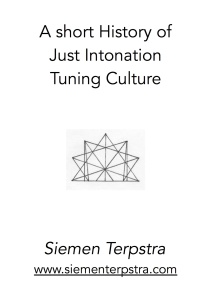 The use of Just Intonation (simple ratios) as a musical tuning norm has a very long and illustrious history. However, this history is also rather complex. I cannot hope to give but the barest outline of an overview in the abbreviated format – it deserves a book. Nevertheless, an essay is a valuable exercise in condensed presentation, although it inevitably has its price. My interpretations of the historical data are sometimes based on long strings of circumstantial evidence, since this is all the information available. Consequently, it is only possible to present a fraction of the arguments that support my conclusions within this brief context. The reader should not forget that this is only one person’s version of the most likely story.
The use of Just Intonation (simple ratios) as a musical tuning norm has a very long and illustrious history. However, this history is also rather complex. I cannot hope to give but the barest outline of an overview in the abbreviated format – it deserves a book. Nevertheless, an essay is a valuable exercise in condensed presentation, although it inevitably has its price. My interpretations of the historical data are sometimes based on long strings of circumstantial evidence, since this is all the information available. Consequently, it is only possible to present a fraction of the arguments that support my conclusions within this brief context. The reader should not forget that this is only one person’s version of the most likely story.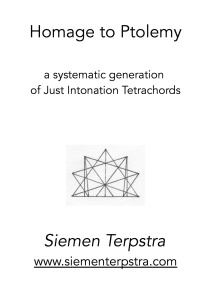 The author generates a handsome collection of tetrachords by using an archaic arithmetical procedure. He embeds various historical tetrachords into the group, with special focus on Ptolemy. He provides historical context. He also presents a generalized classification of tetrachord types. Finally he demonstrates the usefulness of the schisma resolution in modelling the fine grain of n-limit Just Intonation.
The author generates a handsome collection of tetrachords by using an archaic arithmetical procedure. He embeds various historical tetrachords into the group, with special focus on Ptolemy. He provides historical context. He also presents a generalized classification of tetrachord types. Finally he demonstrates the usefulness of the schisma resolution in modelling the fine grain of n-limit Just Intonation.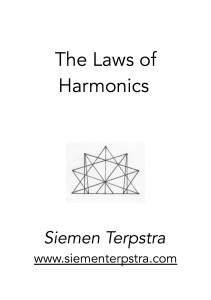 Starting in the middle 1980’s, around the time that I wrote up A Short List of Musical-Cosmological Monochords, I began a patient compilation of diagrams. Most of them consisted of elaborate tables showing numerous just ratios calculated in cents, as well as some speculative monochords and representations of the Harmonic Series. I meant this work to accompany a text that sums up my investigations into Harmonics. Inevitably, it reflected my interests during the seventies and early eighties – just intonation, drone-based music, and monochords. I never got around to writing the text, though I left a couple of pages of notes. After a few years I scrapped the whole project and archived it under the rather imposing heading: The Laws of Harmonics. Recently I dragged it out of its storage to reconsider the project.
Starting in the middle 1980’s, around the time that I wrote up A Short List of Musical-Cosmological Monochords, I began a patient compilation of diagrams. Most of them consisted of elaborate tables showing numerous just ratios calculated in cents, as well as some speculative monochords and representations of the Harmonic Series. I meant this work to accompany a text that sums up my investigations into Harmonics. Inevitably, it reflected my interests during the seventies and early eighties – just intonation, drone-based music, and monochords. I never got around to writing the text, though I left a couple of pages of notes. After a few years I scrapped the whole project and archived it under the rather imposing heading: The Laws of Harmonics. Recently I dragged it out of its storage to reconsider the project.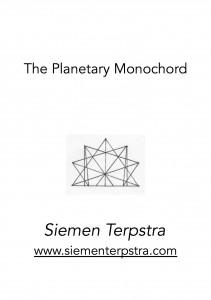 scale.
scale.